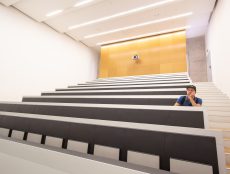
Articles
K-12
K-5 Students Experienced 2-4 Months of Learning Loss from Shutdowns, According to Illuminate Education Study
By Rebecca Hinkle
August 31, 2020
As students prepare to return to class this fall, there are many questions going through the minds of teachers. Many are wondering what schools need to do to get students back on track. A recent study from education software provider Illuminate Education examines the impact COVID-19 has had on K-5 students and suggests recommendations to help catch their students up.
According to the study released on Aug. 25, K-5 students have experienced two to four months’ worth of learning loss in reading and math at a time when they should be logging learning gains. Then the school year ended. Each summer, K-5 students experience the ‘summer slide,’ or a learning loss between the spring and fall semesters. But this year the learning loss is expected to be larger due to COVID-19.
“The data are telling us what we already suspected: this fall, educators need to be ready to use the appropriate tools to identify and contend with student learning loss, particularly in grades K-2,” said Dr. John Bielinski, Sr. Dir. of Research & Development at Illuminate Education, in a statement.
To measure where K-5 students are, Illuminate Education used its Fastbridge Platform for three assessments to determine and compare where students are and what is needed to get them back on track this fall.
How Illuminate Education Determined Learning Loss for K-5 Students
Scores from three specific FastBridge assessments were evaluated. The first assessment, aReading, is a computer adaptive reading assessment that measures reading ability on foundational reading skills, vocabulary, and reading comprehension. The second assessment is aMath, another computer adaptive assessment that measures concepts and problem-solving skills in whole numbers and fractions, computation, algebraic thinking, geometry, measurement, and date analysis and probability. The third assessment was CBMreading. CBMreading is a timed sample of a student’s oral reading fluency to document the number of words read correctly in one minute.
Students at different levels recorded varying behavior. Learners in grades K-2 showed significant learning loss on the aReading and aMath tests. Meanwhile, 5th graders logged their biggest losses on the CBMreading assessment.
The typical American pupil could suffer nearly seven months of learning loss if in-person instruction does not resume until January, analysts suggest https://t.co/cM0Zv3EddL
— The Economist (@TheEconomist) August 30, 2020
These findings corroborate other studies. Many estimates and models have predicted learning loss in some form for students across regions and grade levels. However, the details of these losses will vary.
According to the study COVID-Slide: Research on Learning Loss and Recommendations to Close the Gap, “Schools should expect to have higher numbers of students needing remedial reading and math instruction as well as strategic supports in order to achieve grade-level learning goals.”
The greatest amount of loss in reading was witnessed among kindergarten students, and oral reading loss was the most noted for Grade 5 students. All K-5 students had high rates of a learning loss in math. According to the study, performance in reading could be around 1 to 2 months behind, and performances in math could be 2 ¼ months to 4 ¼ months behind. Oral reading performances could be 2 to 4 months behind.
What’s the Next Step?
To address this issue, Illuminate Education’s authors suggested to increase Tier 1 instruction to address the areas with the largest learning loss gaps with Tier 1 being a universal intervention made available to all students. They also recommended a sharp focus on a strong core instruction, look to the norm as a common goal for all students, using a front load intervention and progress monitoring quickly and efficiently as possible for those students who are further behind, and more focus on reading and math for the students in K-3.
The study mentions that it is still difficult to predict how individual students will do with virtual learning. “Students who participated in frequent virtual interactions with teachers, especially one-on-one with videoconferencing, and completed homework assignments will likely have smaller losses than students who did not,” the authors write. “Nonetheless, in many instances this information will not be easily available when students return to fall instruction.”
Students who lack access to their virtual classes have a greater risk of falling behind their peers, and in order for students to be successful during this time, a firm understanding of what each student’s technological access looks like at home is needed.
Featured Image: Thomas Park, Unsplash.









[…] The conclusions drawn from this study are relevant for research in adaptive personalized reading courseware. But they also reverberate more broadly. Many education researchers consider efficacy research a main bellwether in edtech. […]